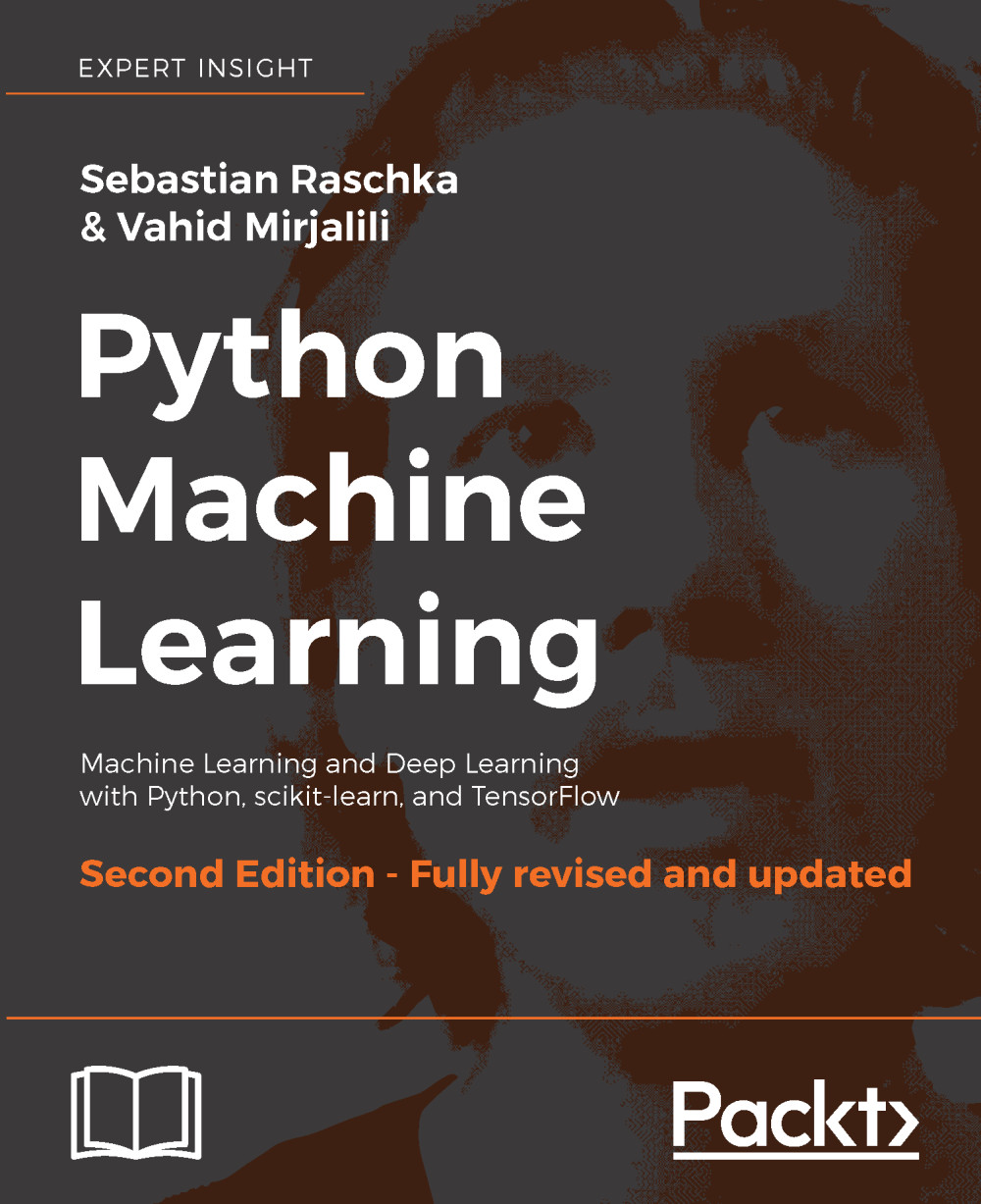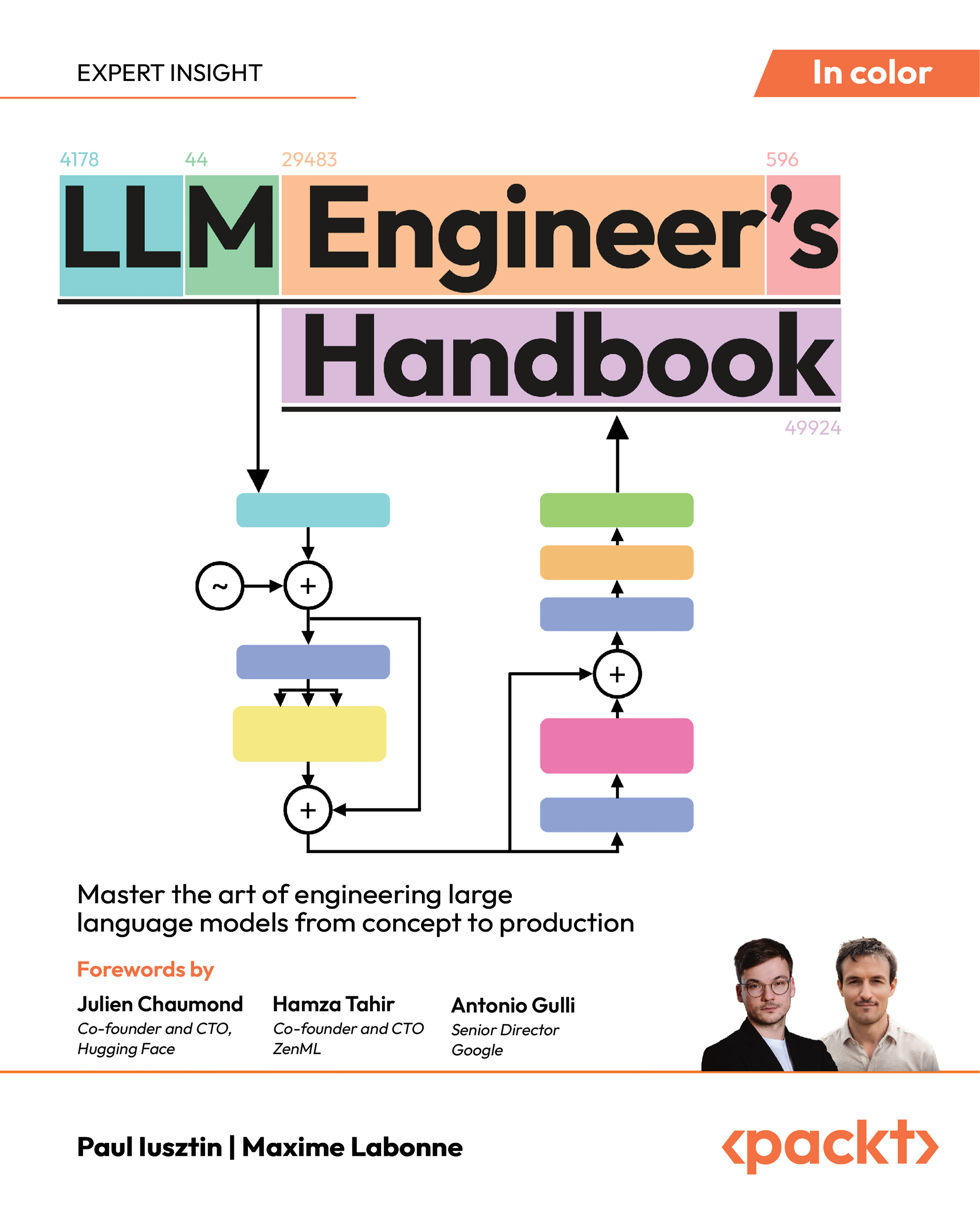Data science deals in part with structured tables of data. The scikit-learn library requires input tables of two-dimensional NumPy arrays. In this section, you will learn about the numpy library.
We will try a few operations on NumPy arrays. NumPy arrays have a single type for all of their elements and a predefined shape. Let us look first at their shape.
The shape and dimension of NumPy arrays
- Start by importing NumPy:
import numpy as np
- Produce a NumPy array of 10 digits, similar to Python's
range(10) method:
np.arange(10)
array([0, 1, 2, 3, 4, 5, 6, 7, 8, 9])
- The array looks like a Python list with only one pair of brackets. This means it is of one dimension. Store the array and find out the shape:
array_1 = np.arange(10)
array_1.shape
(10L,)
- The array has a data attribute,
shape. The type of array_1.shape is a tuple (10L,), which has length 1, in this case. The number of dimensions is the same as the length of the tuple—a dimension of 1, in this case:
array_1.ndim #Find number of dimensions of array_1
1
- The array has 10 elements. Reshape the array by calling the
reshape method:
array_1.reshape((5,2))
array([[0, 1],
[2, 3],
[4, 5],
[6, 7],
[8, 9]])- This reshapes the array into 5 x 2 data object that resembles a list of lists (a three dimensional NumPy array looks like a list of lists of lists). You did not save the changes. Save the reshaped array as follows::
array_1 = array_1.reshape((5,2))
- Note that
array_1 is now two-dimensional. This is expected, as its shape has two numbers and it looks like a Python list of lists:
array_1.ndim
2
- Add
1 to every element of the array by broadcasting. Note that changes to the array are not saved:
array_1 + 1
array([[ 1, 2],
[ 3, 4],
[ 5, 6],
[ 7, 8],
[ 9, 10]])The term broadcasting refers to the smaller array being stretched or broadcast across the larger array. In the first example, the scalar 1 was stretched to a 5 x 2 shape and then added to array_1.
- Create a new
array_2 array. Observe what occurs when you multiply the array by itself (this is not matrix multiplication; it is element-wise multiplication of arrays):
array_2 = np.arange(10)
array_2 * array_2
array([ 0, 1, 4, 9, 16, 25, 36, 49, 64, 81])
- Every element has been squared. Here, element-wise multiplication has occurred. Here is a more complicated example:
array_2 = array_2 ** 2 #Note that this is equivalent to array_2 * array_2
array_2 = array_2.reshape((5,2))
array_2
array([[ 0, 1],
[ 4, 9],
[16, 25],
[36, 49],
[64, 81]])array_1 = array_1 + 1
array_1
array([[ 1, 2],
[ 3, 4],
[ 5, 6],
[ 7, 8],
[ 9, 10]])- Now add
array_1 and array_2 element-wise by simply placing a plus sign between the arrays:
array_1 + array_2
array([[ 1, 3],
[ 7, 13],
[21, 31],
[43, 57],
[73, 91]])- The formal broadcasting rules require that whenever you are comparing the shapes of both arrays from right to left, all the numbers have to either match or be one. The shapes 5 X 2 and 5 X 2 match for both entries from right to left. However, the shape 5 X 2 X 1 does not match 5 X 2, as the second values from the right, 2 and 5 respectively, are mismatched:
Initializing NumPy arrays and dtypes
There are several ways to initialize NumPy arrays besides np.arange:
- Initialize an array of zeros with
np.zeros. The np.zeros((5,2)) command creates a 5 x 2 array of zeros:
np.zeros((5,2))
array([[ 0., 0.],
[ 0., 0.],
[ 0., 0.],
[ 0., 0.],
[ 0., 0.]])- Initialize an array of ones using
np.ones. Introduce a dtype argument, set to np.int, to ensure that the ones are of NumPy integer type. Note that scikit-learn expects np.float arguments in arrays. The dtype refers to the type of every element in a NumPy array. It remains the same throughout the array. Every single element of the array below has a np.int integer type.
np.ones((5,2), dtype = np.int)
array([[1, 1],
[1, 1],
[1, 1],
[1, 1],
[1, 1]])- Use
np.empty to allocate memory for an array of a specific size and dtype, but no particular initialized values:
np.empty((5,2), dtype = np.float)
array([[ 3.14724935e-316, 3.14859499e-316],
[ 3.14858945e-316, 3.14861159e-316],
[ 3.14861435e-316, 3.14861712e-316],
[ 3.14861989e-316, 3.14862265e-316],
[ 3.14862542e-316, 3.14862819e-316]])- Use
np.zeros, np.ones, and np.empty to allocate memory for NumPy arrays with different initial values.
- Look up the values of the two-dimensional arrays with indexing:
array_1[0,0] #Finds value in first row and first column.
1
array_1[0,:]
array([1, 2])
- Then view the first column:
array_1[:,0]
array([1, 3, 5, 7, 9])
- View specific values along both axes. Also view the second to the fourth rows:
array_1[2:5, :]
array([[ 5, 6],
[ 7, 8],
[ 9, 10]])- View the second to the fourth rows only along the first column:
array_1[2:5,0]
array([5, 7, 9])
Additionally, NumPy handles indexing with Boolean logic:
- First produce a Boolean array:
array_1>5
array([[False, False],
[False, False],
[False, True],
[ True, True],
[ True, True]], dtype=bool)- Place brackets around the Boolean array to filter by the Boolean array:
array_1[array_1 > 5]
array([ 6, 7, 8, 9, 10])
- Add all the elements of the array with the
sum method. Go back to array_1:
array_1
array([[ 1, 2],
[ 3, 4],
[ 5, 6],
[ 7, 8],
[ 9, 10]])
array_1.sum()
55- Find all the sums by row:
array_1.sum(axis = 1)
array([ 3, 7, 11, 15, 19])
- Find all the sums by column:
array_1.sum(axis = 0)
array([25, 30])
- Find the mean of each column in a similar way. Note that the
dtype of the array of averages is np.float:
array_1.mean(axis = 0)
array([ 5., 6.])
- Scikit-learn will not accept
np.nan values. Take array_3 as follows:
array_3 = np.array([np.nan, 0, 1, 2, np.nan])
- Find the NaN values with a special Boolean array created by the
np.isnan function:
np.isnan(array_3)
array([ True, False, False, False, True], dtype=bool)
- Filter the NaN values by negating the Boolean array with the symbol ~ and placing brackets around the expression:
array_3[~np.isnan(array_3)]
>array([ 0., 1., 2.])
- Alternatively, set the NaN values to zero:
array_3[np.isnan(array_3)] = 0
array_3
array([ 0., 0., 1., 2., 0.])
 United States
United States
 Great Britain
Great Britain
 India
India
 Germany
Germany
 France
France
 Canada
Canada
 Russia
Russia
 Spain
Spain
 Brazil
Brazil
 Australia
Australia
 South Africa
South Africa
 Thailand
Thailand
 Ukraine
Ukraine
 Switzerland
Switzerland
 Slovakia
Slovakia
 Luxembourg
Luxembourg
 Hungary
Hungary
 Romania
Romania
 Denmark
Denmark
 Ireland
Ireland
 Estonia
Estonia
 Belgium
Belgium
 Italy
Italy
 Finland
Finland
 Cyprus
Cyprus
 Lithuania
Lithuania
 Latvia
Latvia
 Malta
Malta
 Netherlands
Netherlands
 Portugal
Portugal
 Slovenia
Slovenia
 Sweden
Sweden
 Argentina
Argentina
 Colombia
Colombia
 Ecuador
Ecuador
 Indonesia
Indonesia
 Mexico
Mexico
 New Zealand
New Zealand
 Norway
Norway
 South Korea
South Korea
 Taiwan
Taiwan
 Turkey
Turkey
 Czechia
Czechia
 Austria
Austria
 Greece
Greece
 Isle of Man
Isle of Man
 Bulgaria
Bulgaria
 Japan
Japan
 Philippines
Philippines
 Poland
Poland
 Singapore
Singapore
 Egypt
Egypt
 Chile
Chile
 Malaysia
Malaysia

















